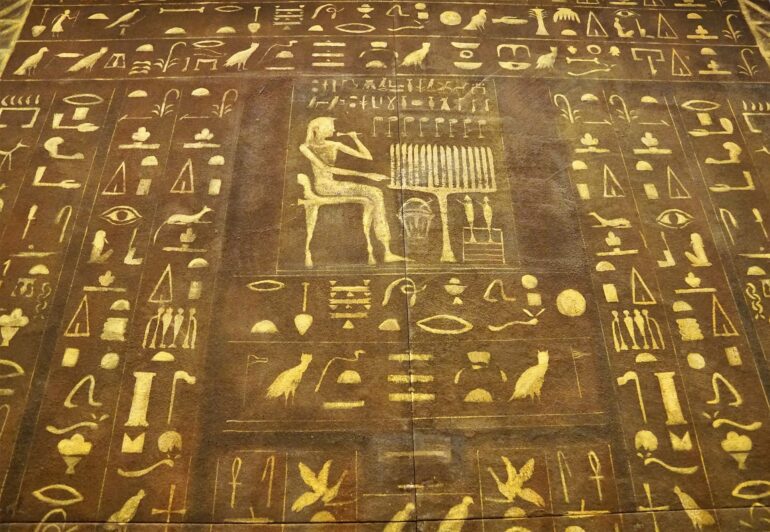TL;DR:
- Researchers are using AI to swiftly translate ancient languages and texts into English, including Cuneiform and Egyptian hieroglyphs.
- A recent Oxford Academic report showcases the successful application of natural language processing (NLP) to translate cuneiform tablets from Akkadian into English.
- The scarcity of training data poses a challenge, but tens of thousands of examples have been gathered to train the models.
- Cuneiform, one of the earliest writing systems, documented various ancient dialects, and the Akkadian language was widely spoken and written in ancient Mesopotamia.
- AI is also assisting in archaeological discovery by identifying ancient sites and unveiling enigmatic geoglyphs.
- Google’s Fabricius project offers online tools to decode ancient Egyptian hieroglyphs into English, making it easier for modern researchers.
Main AI News:
Decoding ancient languages and texts has long posed a formidable challenge for archaeologists, but a groundbreaking solution has emerged. Researchers are harnessing the power of artificial intelligence (AI) to swiftly translate ancient languages and texts into English, revolutionizing the field. This remarkable advancement includes the decipherment of enigmatic scripts such as ancient Cuneiform and Egyptian hieroglyphs.
A recent report published by a group of AI developers affiliated with Oxford Academic sheds light on their successful application of natural language processing (NLP) to translate Akkadian cuneiform tablets into English. “The political, social, economic, and scientific history of ancient Mesopotamia is documented on hundreds of thousands of clay tablets inscribed in the cuneiform script,” the report explains. “Regrettably, due to the vast quantity and limited expertise available, most of these invaluable documents remain untranslated and inaccessible.”
Translating ancient texts using AI is far from a simple task akin to running an image through a ChatGPT plugin. “Our primary challenge lies in the scarcity of training data,” reveals Gai Gutherz, co-author of the report, during an interview with Decrypt. “Obtaining a substantial dataset proved to be a hurdle; nonetheless, we managed to gather tens of thousands of examples.” While translating Akkadian presented more complexities compared to Spanish, the abundance of available data derived from its widespread usage facilitated the training process. Gutherz, a skilled software engineer at Google, elaborates, “Akkadian held immense importance as the lingua franca of the ancient Middle East and Mesopotamia. It served as the language of communication amidst the region’s diverse linguistic landscape, much like English today.“
Cuneiform, a writing system that originated around 3400 BCE, stands as one of the earliest methods employed to transcribe various ancient dialects, including Sumerian, Akkadian, Hittite, Aramaic, and Old Persian. The Epic of Gilgamesh, the oldest surviving literary work known to humankind, was written over 4,000 years ago in the Akkadian language using cuneiform script—a testament to its enduring significance.
In a separate endeavor, an Italian research team recently published a noteworthy paper elucidating how AI aids in the identification of ancient sites within the Mesopotamian floodplains, facilitating archaeological discoveries. Moreover, researchers made a groundbreaking revelation earlier this month by employing AI to unveil Nasca geoglyphs in Peru—intricate etchings of humans and animals etched across vast landscapes.
Another commendable initiative aimed at aiding contemporary researchers in comprehending ancient languages and texts is Google’s Fabricius project. Fabricius introduces a user-friendly online toolset developed by the tech giant, allowing users to decode ancient Egyptian hieroglyphs into English. “To grasp the essence of hieroglyphs, one can liken them to the ancient Egyptian equivalent of emojis,” elucidates Fabricius, highlighting the user-friendly approach of the project.
Conclusion:
The integration of AI into the field of archaeology and linguistics brings about remarkable advancements. The ability to decode ancient languages and texts at a rapid pace opens up vast possibilities for understanding ancient civilizations. This technological breakthrough not only enriches our knowledge but also presents opportunities for businesses operating in the historical research, cultural heritage, and tourism sectors. The demand for AI-driven language translation tools and archaeological discovery solutions is likely to rise, fostering innovation and investment in these markets.
Source

